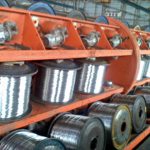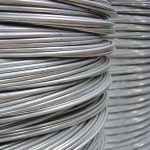September 1, 2014

Calibration in measurement technology means establishing the measurement deviations on the measuring unit. During the calibration no technical intervention occurs at the measuring instrument, as opposed to adjusting where a measuring instrument is set or adapted to keep the measurement errors as small as possible or that the number of measurement errors do not exceed the error limits. The official calibration of a measuring unit is carried out according to the rules and regulations of the examining authority and the unit is marked with the respective stamp. The examining authority establishes whether the respective measuring unit fulfils the respective prerequisites.
The validity of a calibration period follows practical requirements such as manufactures information, requirements of quality standards or company internal and customer specific regulations, rather than an official calibration with a fixed time period validity for use.
Return and Calibrating Hierarchy
In order to be able to compare results of measurement, it must be possible to «feedback» information via a chain of comparison measurements to a national or international master. For this purpose, the display of the measuring unit in use or the material representation must be compared with the masters in one or more stages. On each of these stages a calibration is carried out with a master which has been previously calibrated with a higher-level master. According to the ranking of the master – of consumption or factory standards via reference masters up to national standards – there is a calibration hierarchy of points to be carried out. This extends from the in-house calibrating laboratory through accredited calibrating laboratories up to the national metro-logical institute.
Professional Calibration
Different standards, regulations and guidelines are valid for the expert carrying out of calibrations. A unit must fulfil basic requirements before a unit can be calibrated. One must also be aware of the physical conditions required in order to carry out a calibration and observe them. Rules for the calibration of instruments are essential when a company decides on adhering to a specific norm or guideline or if it produces a product whose production is subjected to legal regulations.
Standards for Quality Control – Statutory Regulations
Standards and regulations, such as the ISO 9000 series, are becoming more important for quality assurance in all industrial nations. Then it may be explicitly required to calibrate all test equipment that directly or indirectly influence the quality of the product. This includes, for example, test equipment that are used as references during the production process.
The Zumbach Electronic AG adheres to different standards and guidelines of quality assurance. The regulations of the FDA (American Food and Drug Administration), for example, are important worldwide in respect of international trading relations. The CFR (Code of Federal Regulation) demands that «devices, apparatus, measuring instruments and recording devices be calibrated at suitable intervals in agreement with an in writing created program which contains specific guidelines, schedules, limits and accuracy and precautions for remedial actions if accuracy and/or limits are not fulfilled». European legislation has similar requirements.
Example of a Zumbach measuring unit:
Calibration and Selfcalibration Functions of ODAC® Measuring Heads
Our measuring units are calibrated using reference standards which were certified by the federal office for metrology (www.metas.ch) or by accredited laboratories. Each unit is supplied with a detailed calibration protocol.

A regular check for measuring errors along with the corresponding protocol can be carried out according to the customer requirements. The regularity of these calibrations is dependent on the customer specific requirements (internal regulations). We recommend a check of accuracy every 12 to 24 months.
All the measuring heads of the ODAC® series have a selfcalibration function (Patent DE3111356) which makes a subsequent, regular calibration superfluous, except when exchanging components.
All the relevant parameters for accuracy are continuously monitored by the measuring system and automatically compensated when required. This is particularly important for possible ageing effects of the scanner motor or the possible long-term drift of the measuring electronics.
Documentation
A calibration protocol shows the results of the calibration and documents the traceability to a national master for the representation of the physical units in agreement with the International system of units (SI).




